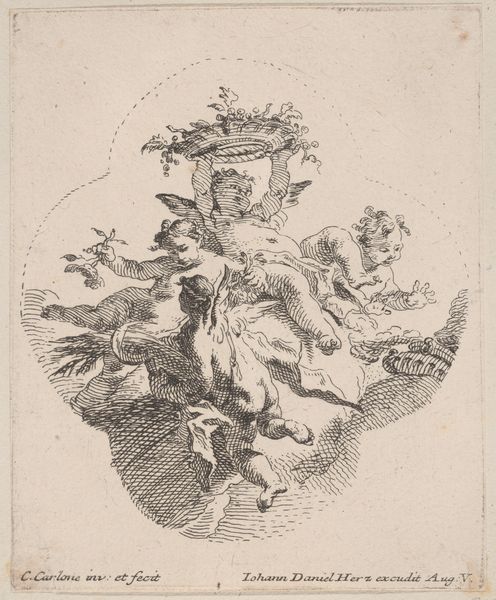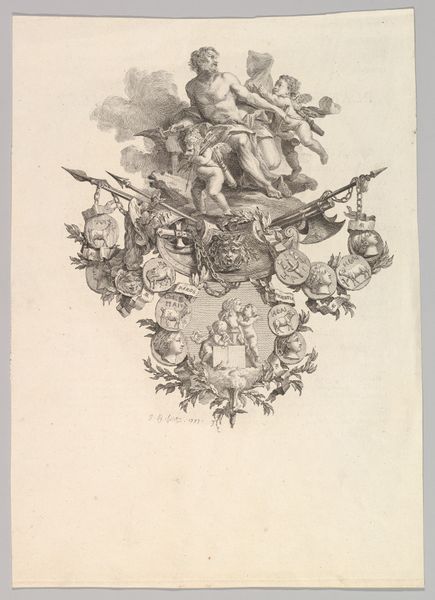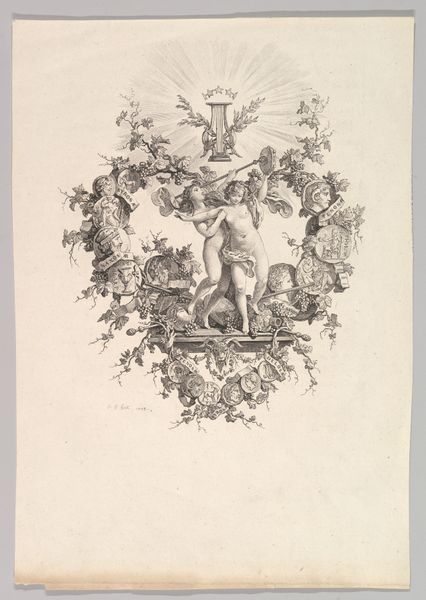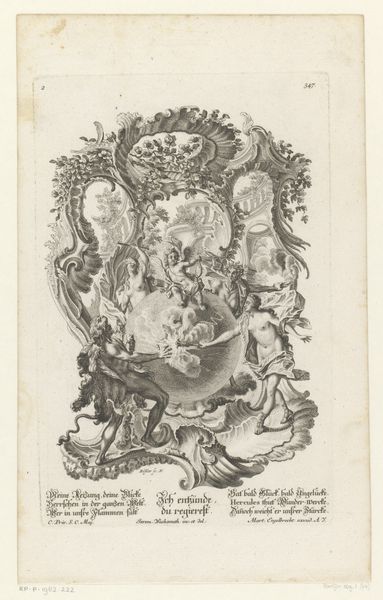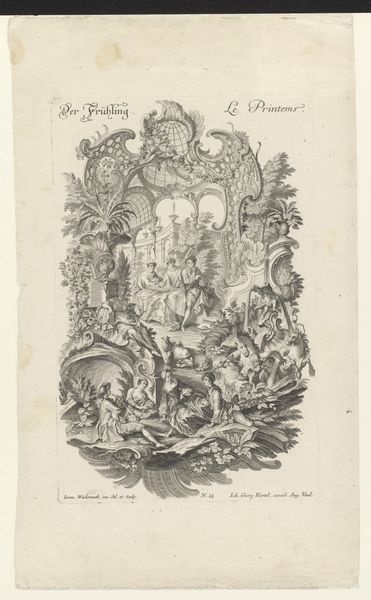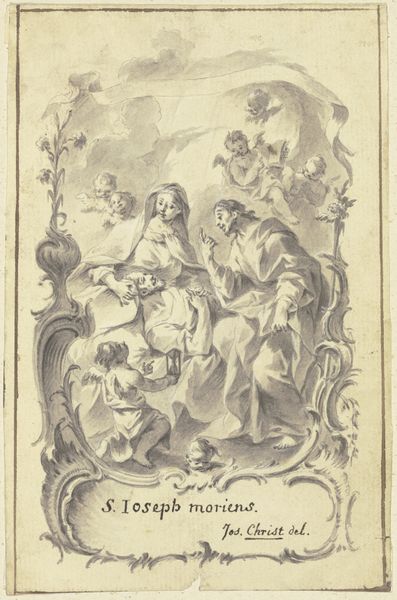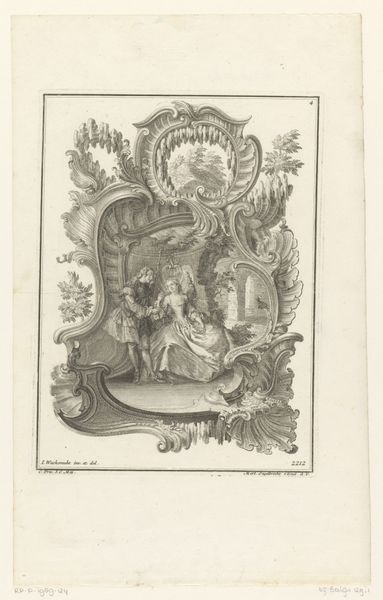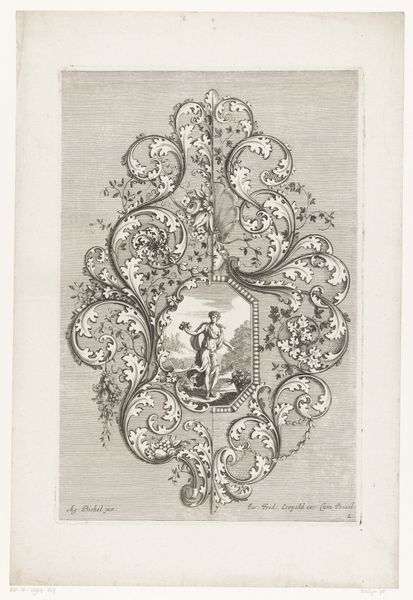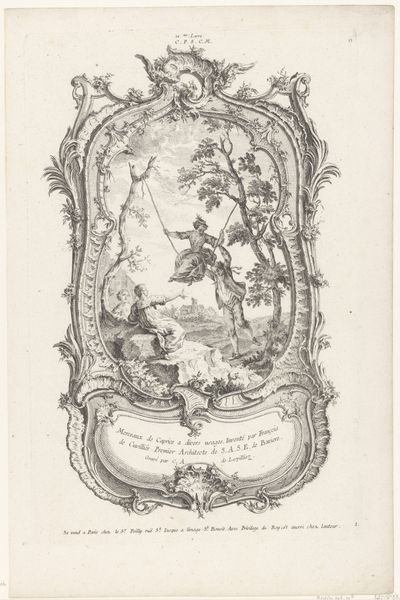
Parted Curtains Revealing Angels Upon Clouds Worshipping a Monstrance (Design for a Stage Set?) 1698 - 1765
0:00
0:00
drawing, ink
#
drawing
#
baroque
#
figuration
#
ink
Dimensions: sheet: 4 7/8 x 3 7/16 in. (12.4 x 8.8 cm)
Copyright: Public Domain
Editor: This ink drawing from sometime between 1698 and 1765, titled "Parted Curtains Revealing Angels Upon Clouds Worshipping a Monstrance (Design for a Stage Set?)" by Giovanni Battista Natali III, feels very theatrical and ethereal, like a dream unfolding. What do you see in this piece? Curator: Immediately, I’m drawn to the curtain motif. Consider what a curtain signifies. It conceals and reveals, suggesting that what we see, the angels worshipping, is a glimpse behind a veil. Curtains as symbolic doorways—aren’t they fascinating? What do you make of the worshipping angels below? Editor: Well, the angels situated among the clouds imply a heavenly scene. The monstrance is very ornate and radiant, like a holy symbol that’s also being spotlighted. It’s all very dramatic! Curator: Yes, the theatricality is key, particularly as this may have been a design for a stage set. But also think about the tradition of the Baroque, its dynamism, and overt displays of faith in Catholic Europe. How do these figures connect viewers across time, what feelings or beliefs are visually passed on? Editor: They remind viewers, myself included, of the importance of faith in some cultures, and what some might regard as a glorious image. I can see a lineage between Baroque theatricality and the spectacle of modern performances. It’s almost a visual through-line. Curator: Precisely! These persistent images shape our cultural memory. Consider how representations of divinity adapt, influencing, and echoing through generations. This design is a single thread woven into that very long tapestry. Editor: So, it's not just about religion or stage design. It is the cultural endurance of images themselves. Curator: Indeed! And that understanding enriches how we perceive this beautiful work.
Comments
No comments
Be the first to comment and join the conversation on the ultimate creative platform.

